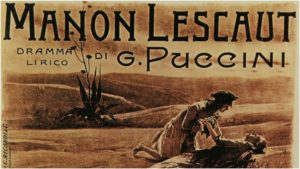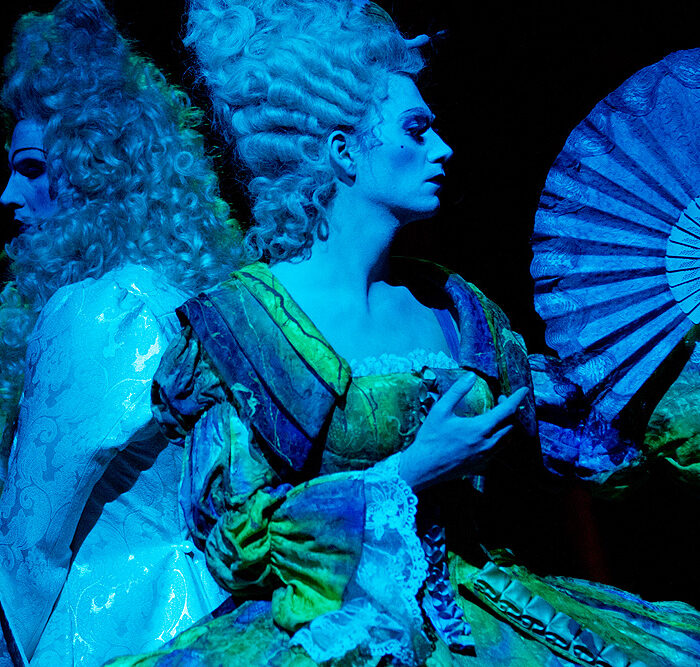
Opera Profile: Puccini’s ‘Manon Lescaut’
By David SalazarThree years before he premiered “La Bohème,” Puccini gave the world “Manon Lescaut.”
The opera, based on the novel by Abbé Prévost, premiered on Feb. 1, 1893, and put Puccini in the public eye as a serious opera composer. The work differs quite greatly from the “Manon” of Massenet, the Tuscan maestro himself comparing his interest in the subject matter with that of the Frenchman.
“Manon is a heroine I believe in and therefore she cannot fail to win the hearts of the public. Why shouldn’t there be two operas about Manon? A woman like Manon can have more than one lover.” He added, “Massenet feels it as a Frenchman, with powder and minuets. I shall feel it as an Italian, with a desperate passion.”
The opera has been a repertory staple ever since.
Short Plot Summary
Des Grieux is mocked by his friends for speaking cynically about love. Manon Lescaut arrives in a carriage with her brother Lescaut and Geronte. Des Grieux immediately falls in love and approaches her. She tells him she is headed to a convent so he offers to help her. She agrees to leave with him. Geronte wants to abduct Manon for his own gain (he is in love with her) and Edmondo, one of Des Grieux’s friends overhears the plan and offers to help his friend leave with her. Manon and Des Grieux eventually escape together.
When the second act begins, Manon is with Geronte as Des Grieux ran out of money and she simply could not live without luxury. After a party, in which Geronte shows off Manon, Des Grieux is brought in by Lescaut to please his sister. The two lovers reconcile but are caught by Geronte and his men.
At Le Havre Manon is set alongside a number of other imprisoned women whose destiny is the new world. Des Grieux begs to board the ship with Manon and is eventually allowed to go.
In the deserts of New Orleans, Manon is dying. Des Grieux runs off looking for help but it is no use. He watches his beloved expire.
Famous Musical Numbers
The arias of the work are arguably the most famous musical numbers. Des Grieux has two contrasting sections. The first aria, “Donna non vidi mai,” sees him enamored with Manon and singing of his newfound love. “Pazzo son… Guardate comio piango ed ímploro” is at the other extreme of emotion, the character desperate to be with his lover.
Meanwhile, Manon gets the famed “Sola, perduta, abbandonata” at the close of the opera, a passage of absolute desolation and desperation.
There is also a famed love duet, which remains a favorite concert piece for its lush and erotic melodies.
Watch and Listen
Though she never actually performed the work live, Maria Callas essayed one of the most famous interpretations of the Puccini opera, which remains preserved on audio recording. She is paired with long-time artistic partner Giuseppe Di Stefano, who is in top form.
Categories
Opera Wiki

